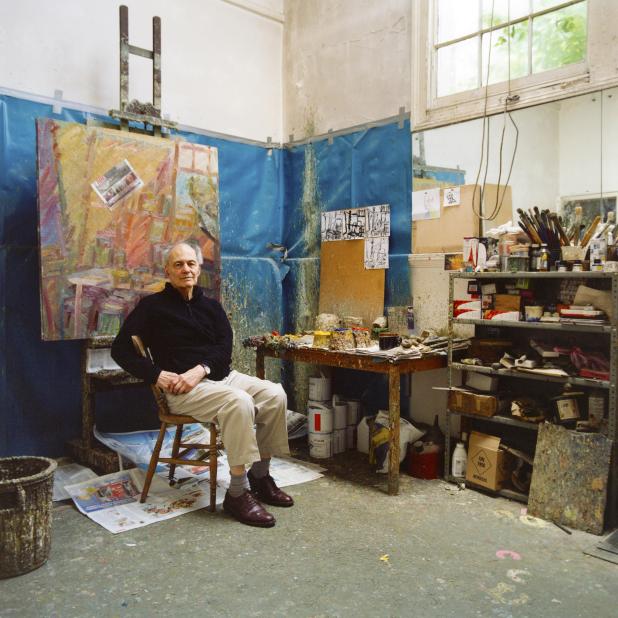
Frank Auerbach’s journey in art, emerging from chaos and rigor, is a testament to the transformative power of paint and persistence. His work, built up through countless revisions and layers, shows a rare dedication to capturing the “spirit in the mass” — an ideal imparted to him by his mentor, David Bomberg. Auerbach’s art is densely tactile, often resembling bas-relief with thick swathes of paint that not only depict but embody his subjects. His portraits, nudes, and urban scenes are rendered with such intensity that they seem almost to pulse with life, defying the flatness of the canvas.
Auerbach’s life in England, where he arrived as a refugee from Nazi Germany at the age of eight, is marked by an enduring attachment to his adopted city of London. His vision of London was intensely localized; his scenes of Mornington Crescent and Primrose Hill, painted repeatedly over decades, became less about capturing the place and more about building personal memory and experience through paint. His connection to the School of London, alongside figures like Lucian Freud and Leon Kossoff, emphasized his commitment to figuration and his resistance to the abstraction trends surrounding him. His work remained defiantly personal, committed to physical presence and intimacy.

Throughout his career, Auerbach remained loyal to a handful of sitters and landscapes, including long-time friends and his wife, who became not merely subjects but central elements in his work. His canvases, layered with pigment and scraped back repeatedly, are imbued with a sense of struggle as if the final image was a hard-won revelation. His treatment of color, initially limited to ochres and earth tones, expanded as his career progressed, becoming as fiery as the passion with which he painted.
While slow to grow, Auerbach’s recognition eventually placed him among the most respected British painters. His retrospectives at the Royal Academy and Tate Britain affirmed his legacy, aligning his work with the Old Masters he admired, like Rembrandt and Constable. His recent self-portraits and charcoal works reveal a late-period evolution, adding further dimensions to an already illustrious career. As an artist, he will be remembered for his technical prowess and his unwavering dedication to seeing and feeling his subjects into existence, each stroke of paint a testament to a life intensely lived and deeply felt.

